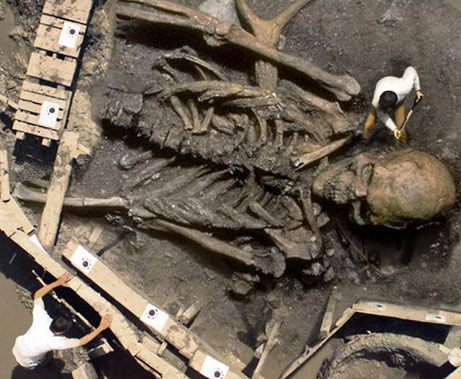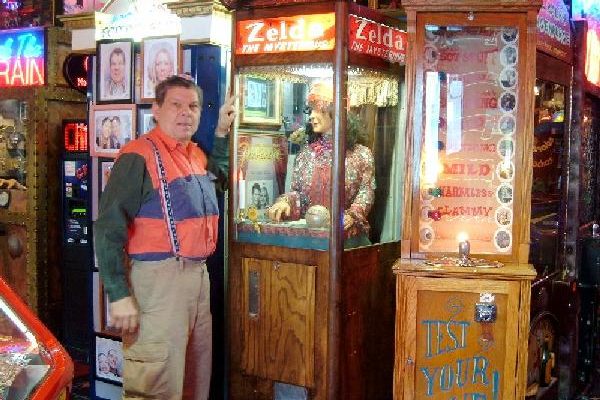FOUND: A Stone Giant in Upstate New York

The Cardiff Giant (Image: Public domain/Wikimedia)
In the fall of 1869, a farmer named Stub Newell asked some neighbors to come over to help dig a well on his property in upstate New York, near the tiny town of Cardiff. When they broke ground, not far beneath the surface, they hit something hard.
Soon, they had uncovered something incredible: a giant stone man.
The giant weighed almost 3,000 pounds and was 10 feet tall. Newell and his neighbors weren’t quite sure what it was—a petrified man or an ancient statue? Either way, people were interested. They came from miles around to see the Cardiff Giant, and Newell started charging 50 cents per person.
Now, ten feet is awfully tall for a human being: Even today, the tallest person ever measured was just under 9 feet tall. And soon enough it became clear that the giant found on Newell’s farm wasn’t real.
Few scientists ever believed the giant was actually a petrified man although some did buy the “ancient statue” story. But in reality, he had been carved just a year or so before. George Hull, Newell’s cousin, had heard a Protestant preacher talking about the Biblical account of giants roaming the earth and seen an opportunity. In secret, he had the giant made from a giant block of gypsum, arranged for it to be buried on Newell’s land, and then waited.
The truth about the giant came out within a few months of its discovery. By that point, Hull and Newell had already sold their giant (it’s now at the Farmers’ Museum, in Cooperstown, N.Y.), and P.T. Barnum had made a plaster copy (now at Marvin’s Marvelous Mechanical Museum, in Michigan).
The Cardiff Giant was far from the only giant that’s been “discovered” over the years. In the 1870s, another Hull-created giant showed up in Colorado. A few years after that, a hotel in upstate New York found their own petrified giant. In 1890, a French anthropologist discovered a set of giant bones that he insisted was human. A few years after that, a saloon in Colorado was giving people a look at a concrete giant named “McGinty” for $1 a person. People want giants to be real so badly that some believe the Smithsonian Institute has actively covered up evidence of giants’ existence.
Since about 2002, stories of giant skeletons being found in India and Saudi Arabia have regularly shown up on the internet. Usually, these stories are accompanied by pictures of giant skulls flanked by tiny human beings. Unlike the late 19th century finds, these are truly giants, reportedly more than 60 feet long. These pictures are, of course, fakes: one of the most prevalent took about 90 minutes create, for a fake photo contest. (It won third place.) But reports of these giant finds are persistent enough that National Geographic has had to address them: “The National Geographic Society has not discovered ancient giant humans,” a 2007 story insisted.

Not a real giant (Image: IronKite)
Every day, we highlight one newly lost or found object, curiosity or wonder. Since this is Cheat Week at Atlas Obscura, those finds will all be fake. Got a favorite hoax? Tell us about it! Send your finds to sarah.laskow@atlasobscura.com.










Follow us on Twitter to get the latest on the world's hidden wonders.
Like us on Facebook to get the latest on the world's hidden wonders.
Follow us on Twitter Like us on Facebook